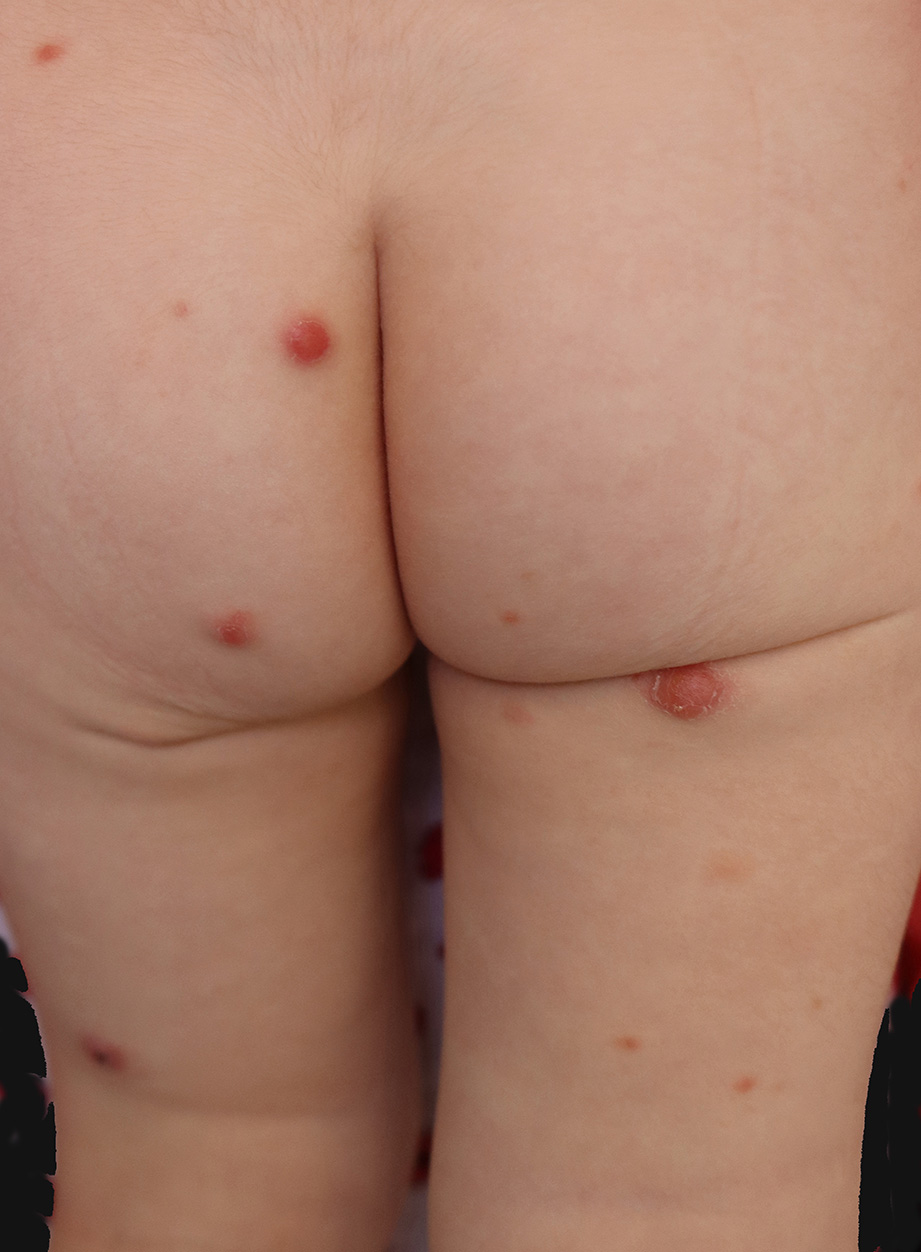Lymphomatoid papulosis in a 2-year-old child.

Downloads
DOI:
https://doi.org/10.26326/2281-9649.31.3.2277How to Cite
Abstract
Lymphomatoid papulosis (LP) is a primary cutaneous T-cell lymphoma (6) characterized by clinical benignity despite its malignant histological appearance.
Its incidence is 1.2-1.9/1,000,000; it is even rarer in the child (2). Its characteristic self-healing tendency has been attributed to the CD30 receptor glycoprotein which belongs to the superfamily of tumor necrosis factor and, interacting with its ligand, regulates cell survival and apoptosis (2, 7). However, the observation of the same self-healing clinical behavior in forms of LP characterized by the scarcity or absence of CD30+ cells clashes against this hypothesis.
The most important problems of LP are the differential diagnosis from other benign and malignant disorders and the possible association with other malignancies. As regards the differential diagnosis, in the cases with one or a few nodules that arise in the hot period insect bites must be considered: the latter are symptomatic and rapidly reach their maximum size, unlike the nodules of LP that continue to grow for a couple of weeks. In forms with many elements, LP must be differentiated from pityriasis lichenoides, in which the elements are more numerous and smaller. The most difficult differential diagnosis is with CD30+ primary cutaneous anaplastic large cell lymphoma which has an identical histological picture, but whose nodules are less numerous, larger and above all do not regress spontaneously.
As for the possible association of LP with other malignancies, especially lymphomas, it must be remembered that the latter arise in about 15% of cases in the first 5 years of follow-up; however, the percentage does not increase significantly in the following 5 years and does not exceed 20% after 25 years follow-up. In adults, the most frequent malignancy is mycosis fungoides (3).
LP in the child does not differ from the adult form either clinically or histologically. Available data suggest that in children LP has a more indolent course, regresses more easily and is less frequently associated with malignancy (1). In a report on 35 patients with an average follow-up of 9 years the risk was 8.6% (4); in a recent meta-analysis of 251 children with LP (5) the incidence of lymphomas was 5.6%. However, the most frequent lymphoma in children is the primary cutaneous lymphoma with CD30+ large anaplastic cells. Lymphoma can arise before, during or after LP. The chance of developing extracutaneous lymphoma is greater in patients who have multifocal skin lesions.
The actual case was presented for its early onset and to underline the better prognosis of LP in the pediatric age.
